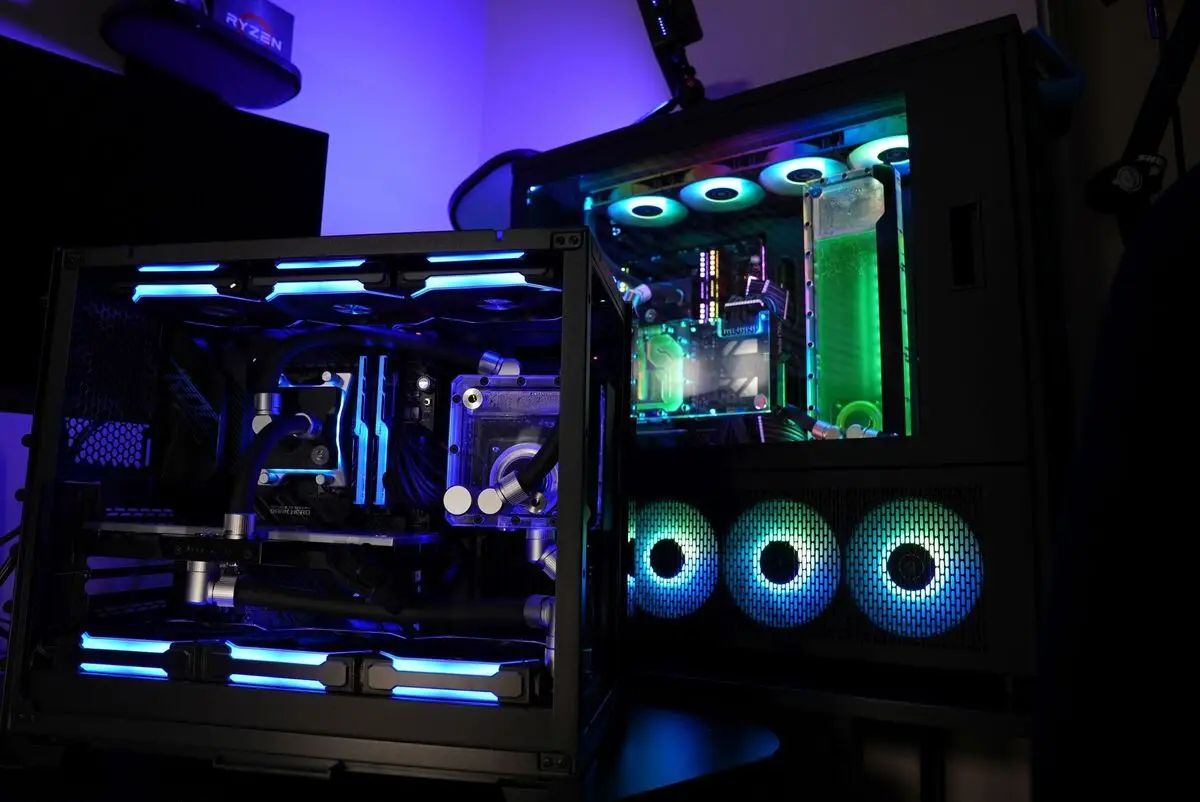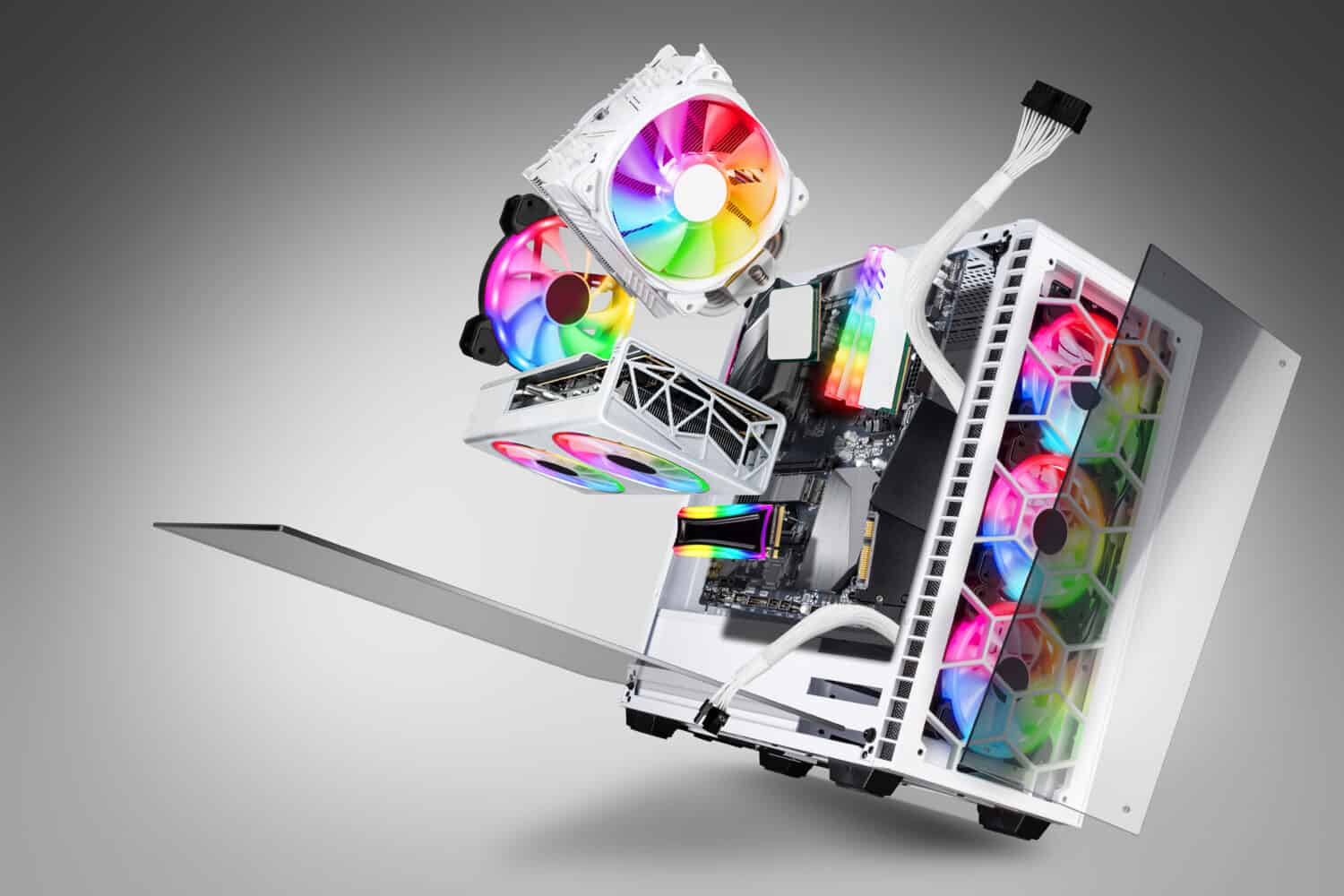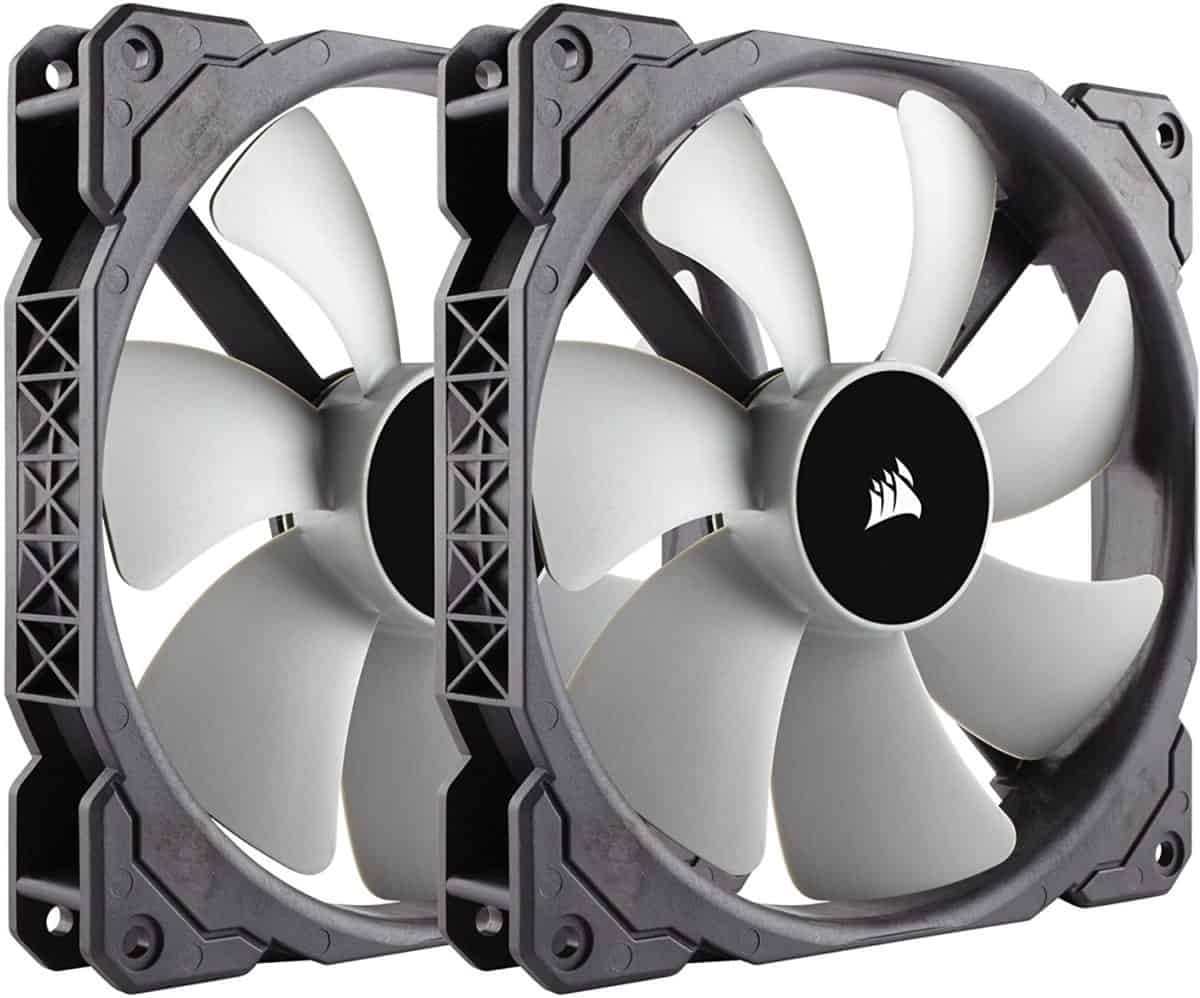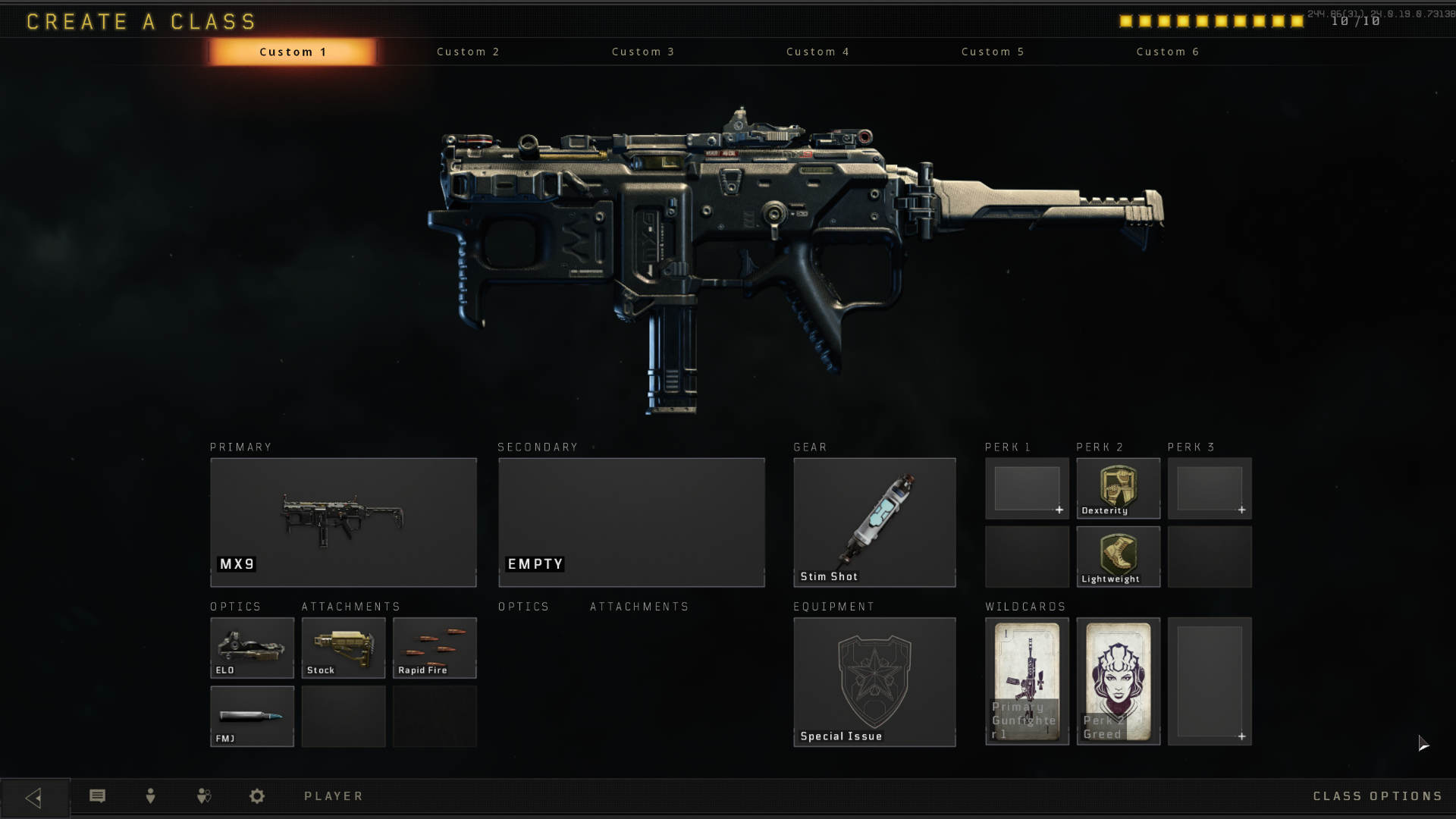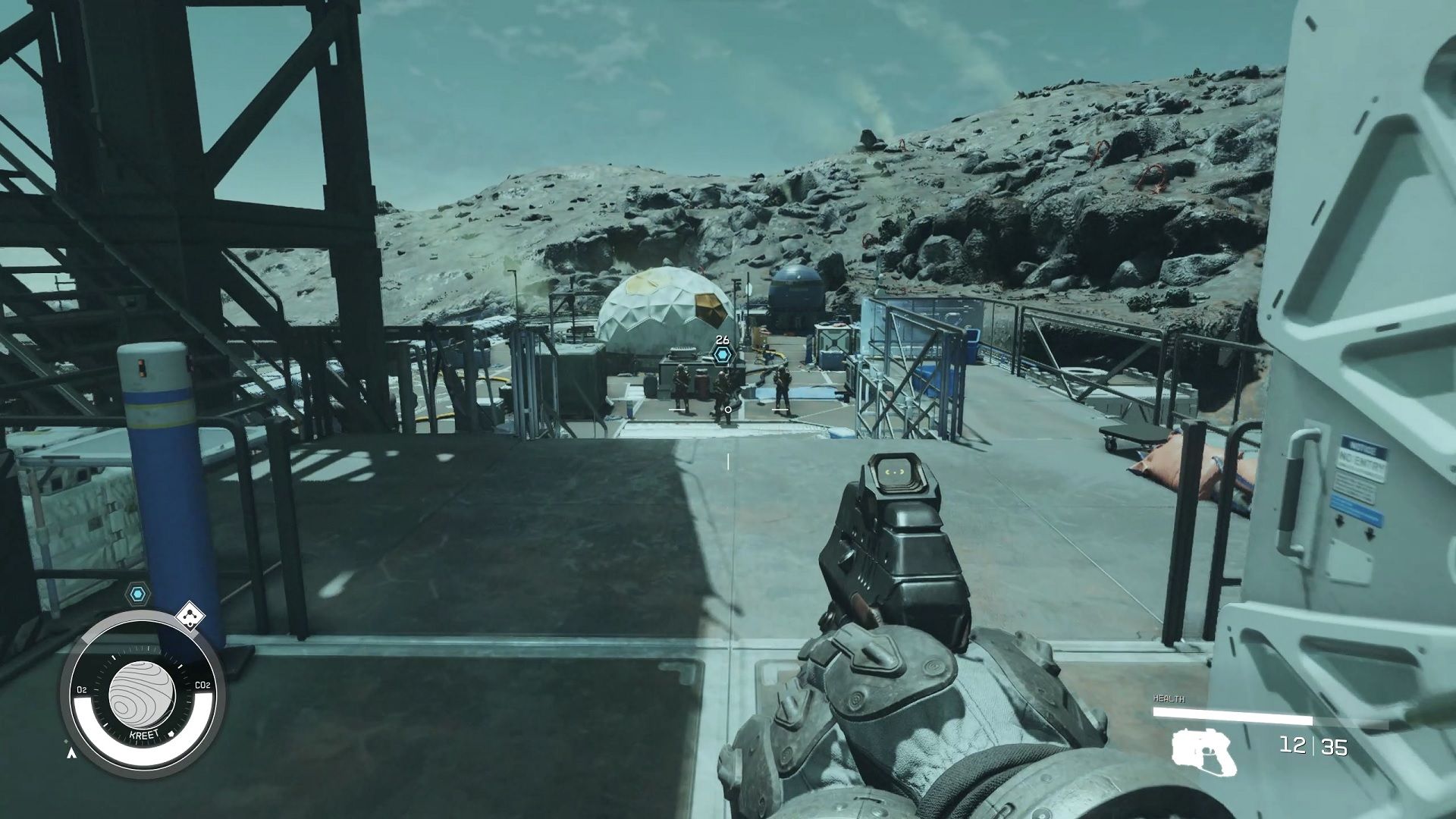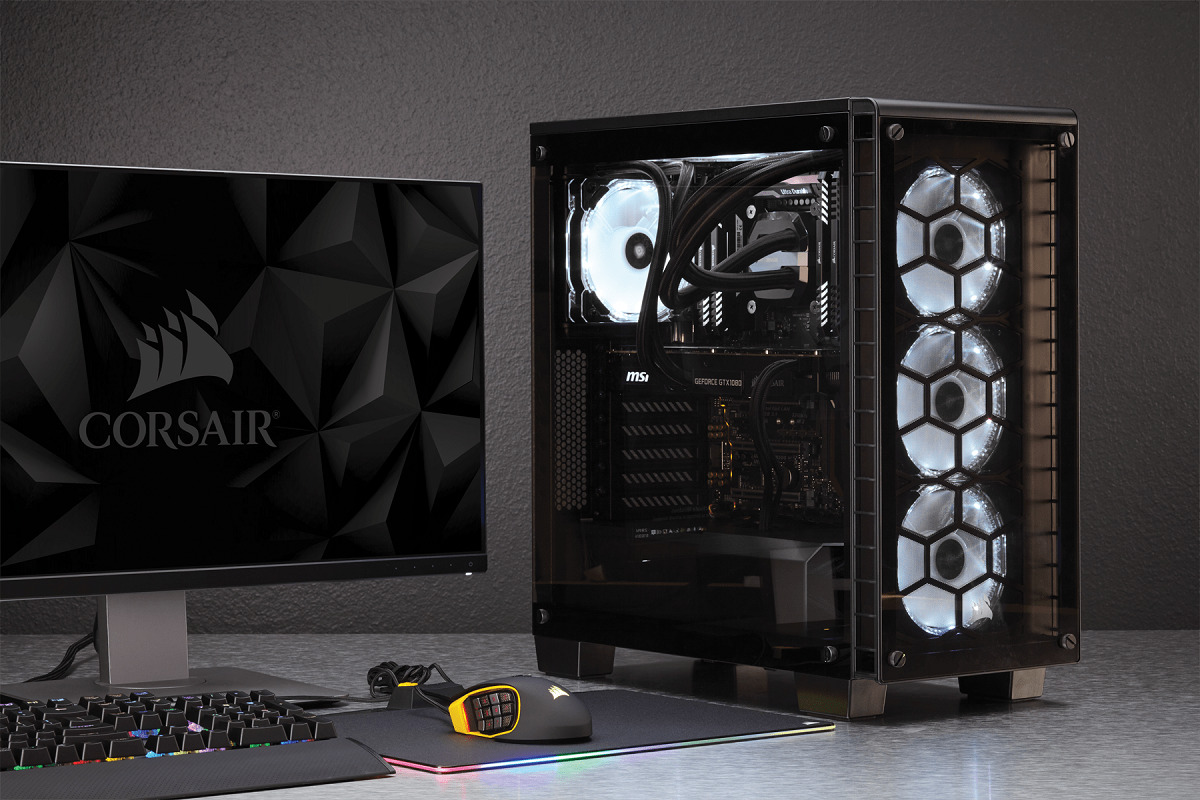Introduction
When it comes to building your own PC, the size of the case is a crucial factor to consider. The right case size not only accommodates all your hardware components but also plays a significant role in the overall performance, cooling, and aesthetics of your system. Choosing the right PC case size can be overwhelming, given the variety of options available in the market.
In this article, we will explore the importance of PC case size and discuss the different factors you should consider when selecting a case. Whether you are a casual user, a gamer, or a professional, understanding the impact of case size on your PC build is essential for a successful and efficient system.
The size of a PC case refers to its physical dimensions, which can vary from compact Mini-ITX cases to large full tower cases. Each case size has its own advantages and considerations, and finding the perfect fit for your needs requires careful consideration of factors such as motherboard compatibility, cooling requirements, future upgradability, and overall aesthetics.
We will explore the differences between ATX, EATX, Mini-ITX, and Micro-ATX form factors, as well as the advantages of full tower and mid tower cases. Additionally, we will delve into the impact of case size on cooling and airflow, the considerations for custom water cooling loops, and the importance of cable management for both functionality and aesthetics.
By the end of this article, you will have a clear understanding of how case size affects your PC build and will be able to make an informed decision when choosing the perfect case for your needs. So, let’s dive in and explore the world of PC case sizes!
Importance of PC Case Size
The size of a PC case may seem like a minor consideration compared to other hardware components, but it plays a crucial role in the overall performance and functionality of your system. Here are some key reasons why the PC case size is important:
- Hardware Compatibility: The size of your PC case determines the type and size of motherboard you can use. Different case sizes have specific motherboard form factor support, such as ATX, Micro-ATX, or Mini-ITX. Choosing a case that is compatible with your desired motherboard ensures a seamless fit and proper alignment of all your components.
- Expansion and Upgradability: A larger case size generally offers more expansion options, allowing you to add additional drives, graphics cards, or other components in the future. This is especially important if you plan on upgrading your system or need room for high-performance hardware.
- Cooling and Airflow: The size of the case affects the cooling capabilities of your PC. A larger case typically allows for better airflow, which helps to dissipate heat more efficiently and maintain lower temperatures for your components. This is particularly important for gaming or high-performance systems that generate a lot of heat.
- Noise Reduction: A larger case size is beneficial for noise reduction as it provides more space for installing larger and quieter fans. This helps in creating a quieter and more comfortable environment, especially during demanding gaming or CPU-intensive tasks.
- Aesthetics: The size and design of the PC case contribute to the overall look and feel of your system. Whether you prefer a sleek and compact Mini-ITX case or a striking full tower case with RGB lighting, choosing the right size can enhance the visual appeal of your PC setup.
Considering these factors, it is important to carefully evaluate your requirements and choose a PC case size that aligns with your needs. A well-chosen case size not only ensures compatibility and functionality but also allows for future upgrades and customization. Now that we understand the importance of case size, let’s explore the different factors to consider when choosing a PC case in the next section.
Factors to Consider When Choosing a PC Case
Selecting the right PC case goes beyond just the size. There are several factors you should consider to ensure that your chosen case meets your requirements and preferences. Here are some key factors to keep in mind when choosing a PC case:
- Motherboard Compatibility: Ensure that the case you choose supports your motherboard’s form factor, such as ATX, Micro-ATX, or Mini-ITX. Check the specifications of both the case and the motherboard to ensure a proper fit.
- Internal Space: Consider the amount of space available inside the case for installing your components. Make sure there is sufficient room for your graphics card, CPU cooler, storage drives, and any other hardware you plan to add.
- Number of Drive Bays: Determine the number of drive bays you need for your storage devices, such as SSDs or HDDs. Additionally, consider if you require external drive bays for optical drives or front-panel ports.
- Form and Design: Think about the overall look and design of the case, as it will be a prominent feature of your PC setup. Choose a design that appeals to your aesthetic preferences, whether it’s a sleek and minimalist style or a bold and gaming-centric design.
- Cable Management: A case with good cable management features, such as routing holes, tie-down points, and hidden compartments, can help keep your build neat and organized. This not only enhances the airflow but also makes future upgrades or maintenance easier.
- Front Panel Connectivity: Evaluate the front-panel connectivity options, including USB ports, audio jacks, and card readers. Ensure that the case provides the necessary ports for your peripherals and devices.
- Airflow and Cooling: Consider the cooling options provided by the case, such as the number and size of fan mounts or radiator compatibility. Proper cooling is crucial for preventing overheating and ensuring optimal performance.
- Noise Reduction: Look for features that contribute to noise reduction, such as sound-dampening materials, fan filters, or specialized noise-absorbing designs. This is particularly important if you desire a quieter system.
- Build Quality and Durability: Opt for a case made from high-quality materials, such as steel or aluminum, to ensure durability and longevity. A well-built case will protect your components and withstand the test of time.
Considering these factors will help you choose a PC case that meets your specific needs and preferences. Take your time to research and compare different options to find the perfect balance between functionality, aesthetics, and value for money. With the right case, you can create a system that not only performs well but also represents your personal style and customization.
ATX vs EATX: What Size Is Right for You?
When it comes to PC cases, two popular motherboard form factors that you may encounter are ATX (Advanced Technology eXtended) and EATX (Extended ATX). Understanding the differences between these two sizes is essential in determining which one is right for your build.
ATX is the most commonly used motherboard form factor. ATX motherboards offer a good balance between features, expandability, and size. These boards typically have four expansion slots and are designed to fit into standard ATX cases. ATX cases are generally more compact, making them suitable for most users looking for a versatile and efficient setup.
On the other hand, EATX motherboards are larger and offer more expansion slots and features. EATX is considered an extended version of ATX and is designed for more high-end and enthusiast-level systems. These motherboards are wider and taller than ATX boards and require a larger case to accommodate the increased size.
When deciding between ATX and EATX, consider the following factors:
- Component Needs: If you have a lot of expansion cards, such as multiple graphics cards, RAID controllers, or sound cards, an EATX motherboard may be a better choice due to its increased number of expansion slots.
- Size and Space: Consider the available space in your working or gaming area. EATX cases tend to be larger and require more space, so ensure that you have enough room to accommodate the larger form factor and case dimensions.
- Cooling and Airflow: EATX cases often provide better cooling options due to their increased size. If you plan on using high-performance components that generate a lot of heat, an EATX case may help with better airflow and temperature management.
- Budget: EATX motherboards and cases are generally more expensive than their ATX counterparts. Consider your budget and whether the additional features and expansion capabilities of an EATX system are worth the extra cost.
- Future Upgradability: If you envision adding more components or expansion cards in the future, an EATX motherboard might offer more flexibility and room for future upgrades compared to ATX boards.
Ultimately, the choice between ATX and EATX depends on your specific needs and preferences. If you require extensive expansion options and have the space and budget for a larger system, an EATX setup might be the right choice. However, if you prefer a more compact and budget-friendly solution that still offers ample features and expandability, an ATX motherboard and case will suit most users. Evaluate your requirements carefully and choose the form factor that fits your build plans and future aspirations.
Mini-ITX vs Micro-ATX: Which Form Factor to Choose?
When it comes to compact PC builds, two popular form factors to consider are Mini-ITX and Micro-ATX. These smaller motherboard sizes offer advantages in terms of size, portability, and versatility. Understanding the differences between Mini-ITX and Micro-ATX will help you decide which form factor is right for your needs.
Mini-ITX is the smallest mainstream motherboard form factor. It measures just 6.7 x 6.7 inches (17 x 17 cm) and typically supports one expansion slot. Although compact, Mini-ITX motherboards often provide all the essential features needed for a powerful system, including support for high-performance CPUs and graphics cards.
Micro-ATX, on the other hand, falls between Mini-ITX and the larger ATX form factor. It measures 9.6 x 9.6 inches (24.4 x 24.4 cm) and typically supports up to four expansion slots. Micro-ATX motherboards offer more expansion capabilities compared to Mini-ITX, making them suitable for users who require additional add-on cards or expansion options.
When deciding between Mini-ITX and Micro-ATX, consider the following factors:
- Size and Portability: Mini-ITX systems are incredibly compact and portable. They are ideal for small spaces, LAN parties, or if you need a portable workstation. Micro-ATX cases are slightly larger but still more compact than ATX systems.
- Expansion Needs: If you require multiple expansion cards, such as additional GPUs, sound cards, or RAID controllers, Micro-ATX offers more expansion slots compared to the single-slot design of Mini-ITX.
- Power and Performance: Both Mini-ITX and Micro-ATX motherboards can support high-performance CPUs and graphics cards. However, Mini-ITX systems may have slightly limited overclocking capabilities due to their compact size and reduced power delivery options.
- Cooling and Airflow: Micro-ATX motherboards and cases typically have better cooling options compared to Mini-ITX, thanks to their larger size and additional fan mounts. If you plan on using high-performance components that generate more heat, a Micro-ATX system may provide better airflow and cooling potential.
- Cost: Mini-ITX motherboards and cases tend to be more expensive compared to Micro-ATX options. Consider your budget and whether the smaller size and portability of Mini-ITX justify the higher cost.
Ultimately, the choice between Mini-ITX and Micro-ATX depends on your specific needs and requirements. If you prioritize compactness, portability, and are willing to trade off some expandability, Mini-ITX is a great choice. However, if you need more expansion options without sacrificing too much in terms of size and portability, Micro-ATX provides a good balance. Assess your needs and decide which form factor aligns best with your goals for performance, functionality, and form factor.
Full Tower vs Mid Tower: Which is the Better Fit?
When it comes to PC cases, two common options are full tower and mid tower. These case sizes offer different features and considerations, making them suitable for various types of builds. Understanding the differences between full tower and mid tower will help you determine which one is the better fit for your needs.
A full tower case is typically larger and taller than a mid tower case. Full tower cases provide a generous amount of space for multiple expansion slots, additional storage drives, and custom cooling solutions. These cases are favored by enthusiasts, gamers, and professionals who require ample room for high-performance components and extensive customization options.
On the other hand, mid tower cases are more compact and versatile. They are the most popular case size for general users and gamers, providing a balance between size, features, and expandability. Mid tower cases can accommodate standard-sized motherboards, multiple storage drives, and high-performance graphics cards, making them suitable for most gaming and general-purpose builds.
When deciding between a full tower and mid tower, consider the following factors:
- Component Needs: If you require extensive room for custom water cooling loops, multiple graphics cards, or an abundance of storage drives, a full tower case is the better fit. Mid tower cases can still provide sufficient space for most high-performance components, but may have limitations when it comes to extensive custom cooling options or multiple expansion cards.
- Space and Room Layout: Assess the available space in your working area or gaming station. Full tower cases require more vertical and horizontal space compared to mid towers. Ensure that you have enough room to accommodate the larger size and dimensions of a full tower case.
- Future Expansion: Consider your plans for future upgrades or additions to your system. If you anticipate adding more components or expansion cards down the line, a full tower case provides more room for future expansion compared to a mid tower case.
- Portability: Full tower cases, due to their larger size and weight, are less portable compared to mid towers. If you need a case that can be easily transported for LAN parties or frequent relocations, a mid tower case offers better portability without sacrificing too much in terms of features and performance.
- Aesthetics: Both full tower and mid tower cases come in a variety of designs and styles. Consider the overall look and aesthetic appeal of the case, as it will be a visible component of your PC setup. Choose a case that matches your style and preferences.
Ultimately, the choice between a full tower and mid tower depends on the specific needs and preferences of your build. If you require extensive expansion options, customization, and have the space to accommodate a larger case, a full tower is the better fit. However, if you value a more compact size and good versatility without compromising on essential features, a mid tower case will suit most users and gamers. Evaluate your requirements and choose the case that best fits your needs for performance, expandability, and aesthetics.
The Impact of Size on Cooling and Airflow
When selecting a PC case, it is crucial to consider the impact of size on cooling and airflow. The size of the case plays a significant role in determining how effectively heat is dissipated from your components, thereby affecting the overall performance and longevity of your system.
A larger case generally offers more room for cooling components, such as fans and radiators, and provides better airflow management. This allows for improved heat dissipation and lower component temperatures. Larger cases typically have more fan mount options, allowing you to install multiple fans for better airflow throughout the case.
Additionally, larger cases often feature better cable management options, with more space behind the motherboard tray to hide cables. Proper cable management ensures cleaner airflow and reduces the chance of cables obstructing fans or other cooling components.
However, it’s important to note that bigger is not always better when it comes to cooling and airflow. While larger cases offer more space, they can also potentially create dead zones in airflow if fans are not strategically placed. It’s crucial to plan your fan placement and ensure that there is proper airflow throughout the case, including intake fans in the front and exhaust fans at the rear and top.
On the other hand, smaller cases, such as compact Mini-ITX or Micro-ATX cases, may have more limited cooling options due to their reduced size. These cases often have fewer fan mounts and limited space for large CPU coolers or radiators. However, advancements in compact cooling solutions, such as low-profile CPU coolers and all-in-one liquid cooling systems, have improved thermal performance in smaller cases.
When choosing a case size, consider the following factors regarding cooling and airflow:
- Component heat generation: Determine the cooling requirements based on the power and heat output of your components, such as high-performance CPUs and graphics cards. More powerful components typically generate more heat, necessitating better cooling capabilities.
- Overclocking: If you plan to overclock your components, additional cooling considerations are necessary. Overclocking increases power consumption and heat output, requiring more efficient cooling to maintain stable performance.
- Environmental factors: Consider the ambient temperature and humidity in the room where your PC will be located. Higher ambient temperatures or humid environments can affect cooling efficiency, and larger cases may provide better long-term thermal performance in such scenarios.
- Noise levels: Cooler components result in quieter operation, as fans don’t have to work as hard to dissipate heat. Consider the balance between cooling performance and noise levels to create a comfortable and quiet computing environment.
Overall, the size of the case directly impacts the cooling and airflow capabilities of your PC. While larger cases generally offer more cooling options and better airflow management, smaller cases can still provide adequate cooling performance with the right components and cooling solutions. Carefully evaluate your cooling needs and select a case that offers the right balance of size, cooling options, and airflow for your specific build.
Upgradability and Future Proofing
When selecting a PC case, considering upgradability and future proofing is essential to ensure that your system can adapt to changing hardware requirements and advancements in technology. Investing in a case that allows for easy upgrades and accommodates future hardware upgrades can save you time and money in the long run.
A case with good upgradability features provides ample space for adding new components and expanding your system. Look for the following factors when assessing a case’s upgradability potential:
- Internal Space: Choose a case that offers sufficient room for additional components, such as extra storage drives, graphics cards, or expansion cards. This allows for easy integration of new hardware as your needs evolve.
- Expansion Slots: Consider the number of expansion slots available in the case. Having extra slots enables you to add more expansion cards, such as sound cards, Wi-Fi cards, or RAID controllers, in the future.
- Compatibility: Ensure that the case is compatible with a wide range of standard components, such as motherboard form factors, power supplies, and cooling solutions. This ensures that you can easily swap out or upgrade individual components without needing to replace the entire case.
- Cable Management: Look for a case with good cable management features, such as routing holes, tie-down points, and ample space behind the motherboard tray. Effective cable management facilitates easier component upgrades and maintenance by reducing clutter and improving airflow.
- Tool-less Design: Cases with tool-less designs make it easier to install and remove components, such as storage drives or expansion cards, without the need for additional tools. This simplifies the upgrade process and minimizes the risk of damage during installation or removal.
- Future Standards & Connectivity: Consider the compatibility of the case with future standards and connectivity options, such as USB-C or Thunderbolt ports. Future-proofing your case ensures that it can accommodate new technologies and peripherals as they become more prevalent.
By choosing a case with good upgradability and future-proofing capabilities, you can extend the lifespan of your system and reduce the hassle and cost of replacing your case when you want to upgrade components. A well-designed case allows for easy customization and expansion, empowering you to adapt to the ever-changing landscape of PC hardware.
Consider your budget, anticipated upgrade needs, and desired longevity when selecting a case. Investing in a case that offers robust upgradability features ensures that your PC can keep up with the demands of tomorrow’s hardware advancements, providing you with a more versatile and durable system.
Considerations for Custom Water Cooling Loops
Custom water cooling loops are a popular option for enthusiasts and gamers who want superior cooling performance and a visually stunning PC setup. If you are considering a custom water cooling loop for your system, there are several important factors to consider before diving into this advanced cooling solution.
1. Compatibility: Ensure that your chosen case, components, and water cooling parts are compatible with each other. Custom water cooling loops require specific water blocks, radiators, pumps, and reservoirs that must fit into your case and be compatible with your CPU and GPU.
2. Space and Layout: Custom water cooling loops require ample space inside the case to accommodate the various components. Larger cases are generally recommended for custom water cooling setups to ensure that you have enough room for all the necessary components, tubing runs, and radiators.
3. Planning and Research: It is crucial to plan your custom water cooling loop meticulously. Consider the layout, tube routing, and fittings needed to achieve optimal performance and aesthetics. Research different components and brands to ensure quality and compatibility.
4. Cooling Performance: Custom water cooling loops are known for their excellent cooling capabilities. They allow you to cool not only the CPU but also the GPU and other components simultaneously. This results in lower temperatures, quieter operation, and better overclocking potential.
5. Maintenance and Upkeep: Custom water cooling loops require regular maintenance to ensure proper operation and avoid issues such as algae growth or pump failure. This includes routine cleaning, coolant changes, and monitoring for leaks or blockages.
6. Budget: Custom water cooling loops can be more expensive compared to air cooling or all-in-one liquid cooling solutions. Consider the cost of all the necessary components, including water blocks, radiators, pumps, tubing, fittings, and coolant. It’s important to set a realistic budget for your custom loop.
7. Aesthetics: Custom water cooling loops offer a unique opportunity to create a visually stunning PC build. Consider the aesthetics of your loop, including the color scheme, lighting effects, and tubing style. This can add a personalized touch to your system.
8. Risks and Challenges: Custom water cooling loops come with some risks, such as leaks or component failures. It’s essential to be prepared for these potential challenges and have a backup plan. Proper planning, research, and regular maintenance can mitigate these risks.
Custom water cooling loops offer unparalleled cooling performance and aesthetics for those willing to put in the effort and investment. Careful consideration of compatibility, space, performance, maintenance, budget, and aesthetics is crucial when embarking on a custom water cooling journey. With proper planning and attention to detail, a custom water cooling loop can elevate your PC to new levels of cooling efficiency and visual appeal.
Cable Management and Aesthetics
Cable management is an important aspect of PC building that often gets overlooked. Proper cable management not only improves the aesthetics of your system but also has practical benefits, such as improved airflow, easier maintenance, and better system longevity. Consider the following factors when focusing on cable management and aesthetics in your PC build.
1. Organization: A well-organized cable management system keeps your cables neat and tidy, preventing them from obstructing airflow or getting tangled in components. Use zip ties, cable clips, or Velcro straps to secure and route your cables in an organized manner, creating clear paths for airflow and easy access to components.
2. Concealment: Concealing cables hides them from view and creates a cleaner, more professional look. Look for cases with dedicated cable management compartments, routing holes, or PSU shrouds that allow you to hide cables behind the motherboard tray or in designated areas.
3. Length and Custom Cables: Opt for cables that are the appropriate length for your build. Longer cables can result in unnecessary clutter and make it more challenging to maintain an organized system. Consider using custom cables or cable extensions for a clean and unified look, matching your desired color scheme.
4. Routing and Positioning: Plan the routing of your cables strategically to minimize their visibility and interference with airflow. Route cables behind the motherboard tray or along unused corners of the case. Position cables in a way that avoids blocking fans or impeding access to components.
5. Cable Tidying Accessories: Invest in cable management accessories such as braided cable sleeves, cable combs, or cable channels to further enhance the appearance and tidiness of your cables. These accessories help to create uniform cable runs and prevent cables from becoming messy or tangled.
6. Aesthetics: Aesthetics play a significant role in creating an appealing PC build. Consider the color and style of your cables, choosing options that complement your overall design scheme. Custom cables, RGB lighting, and cable combs can add a personalized touch to your setup, allowing you to create a visually stunning system.
7. Cable Management Space: When selecting a case, consider the available space for cable management. Choose a case that offers ample clearance behind the motherboard tray or comes with dedicated cable routing features. Sufficient space makes it easier to manage and hide cables effectively.
Remember that aesthetics can differ depending on personal preferences. Some may prefer a clean and minimalist look, while others may opt for a more vibrant and colorful appearance. The key is to create a cable management system that suits your style and maintains optimal functionality for your PC build.
By prioritizing cable management and aesthetics, you can achieve a visually pleasing PC setup while maintaining good airflow and easy maintenance. Taking the time to organize and manage your cables properly will not only enhance the overall look of your build but also contribute to the longevity and efficiency of your system.
Conclusion
Choosing the right PC case size is essential for a successful and efficient system. Throughout this article, we have explored the importance of PC case size and discussed various factors to consider when selecting a case.
We examined the differences between ATX and EATX form factors, considering their compatibility, expansion options, and space requirements. We also compared the Mini-ITX and Micro-ATX sizes, discussing their suitability for different builds and portability needs. Furthermore, we explored the advantages and considerations of full tower and mid tower cases, taking into account their size, cooling capabilities, and expandability.
We delved into the impact of size on cooling and airflow, emphasizing the importance of proper ventilation for optimal performance and component longevity. Additionally, we discussed the considerations for custom water cooling loops, highlighting the importance of planning, compatibility, and maintenance in achieving superior cooling performance and aesthetics.
We also touched upon the significance of cable management in improving airflow, ease of maintenance, and visual appeal. Lastly, we highlighted the value of upgradability and future-proofing, ensuring that your case can accommodate evolving hardware requirements.
By considering these factors and making informed decisions, you can select a PC case that aligns with your needs, preferences, and budget. Whether you prioritize performance, portability, aesthetics, or a combination of these factors, finding the right case size is crucial for creating a functional, efficient, and visually appealing PC setup.
Remember, every PC build is unique, and your choice of case size should cater to your specific requirements and aspirations. With careful planning, attention to detail, and thorough research, you can design a system that not only meets your current needs but also leaves room for future upgrades and customization.
Now that you are equipped with the knowledge and considerations regarding PC case sizes, go ahead and choose the perfect case that will serve as the foundation for your ideal PC build. Happy building!







